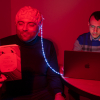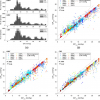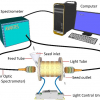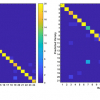
The secret of how seals are able to spend 90 % of their lives at sea holding their breath, without starving their brains of oxygen, has been revealed by researchers at the Universities of St Andrews and Abertay using near infrared (NIR) spectroscopy. Using a modified NIR device, the researchers were able, for the first time, to monitor real-time changes in blood volume and blood oxygenation in the brain and the blubber of the seals.
The researchers were able to monitor what is known as the “dive response” in seals. This phenomenon, which is also present in human beings, involves a reduction in heart rate and redistribution of blood to the core away from peripheral tissues. The research, published in PLOS Biology, found that the dive response in seals can be seen even before they put their faces underwater and begin to hold their breath, indicating an exceptional and unique control over their circulatory system. This evolutionary adaptation allows seals to dive more efficiently and economically.
















